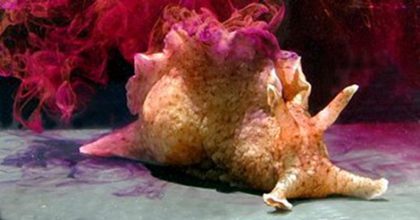
“You’ll never understand because you weren’t there.” One frequently hears that sentiment in one form or another, ironically reminding us that at least some experiences are universal. Our constant connection to what others are doing breeds FoMO, or the fear of missing out. Of course, no one has the time to do everything. But what if you could have the memories of being there without the bother of actually having to be there?
Instead of having your friend tell you about a great party the next day, imagine having her share her memory directly into your mind. Come to think of it, as an introvert, having someone else’s memory of a party might be even better than making my own if they are better at socializing. Actually, if we’re upgrading to memories of folks who exceeded our personal abilities, forget parties–I want to remember starring in Hamilton, giving a Nobel acceptance speech, and walking on the moon.
Of course, if everyone could instantly acquire such memories, there might be little incentive for anyone to put in the hard work required to have those experiences in the first place. Fortunately, such memory transfer is the stuff of science fiction. We don’t even know what a memory looks like, let alone how to copy it and give it to another person. But I found it hard not to imagine these tantalizing, or perhaps seductive, possibilities reading about a study on possible memory transfer in sea hares.
If you’re like me, you remember learning that memories are stored by modifying the connections between neurons. A sensory experience causes a series of connected neurons to fire. Repeating the sequence of neuron activation reinforces those connections and allows us to relive the sensory experience without external input. But that story may be incomplete, at best. A network of neuronal connections would be difficult to replicate from one individual to another. Yet by receiving RNA from the brain of another sea hare, recipients apparently acquired learned behavior from the donors. The RNA may be involved in regulating gene expression. Perhaps that’s why our brains have virus-like particles that share RNA between neurons; they are propagating their gene expression patterns to create or strengthen memories.
There is still a lot of cell and molecular biology to work out to understand how these RNAs encode memory and how the fairly crude process of bulk RNA transfer managed to get the right memories from one snail to another–if indeed that is how memories are stored and if that is what really happened with the sea hares. Right now, we have some intriguing observations and some imaginative hypotheses. I’m happy to dig into the details of the biology with anyone who knows more about this field or who wants to know more. But what I’m most curious about right now is your perspectives on the relevance of sea hare research to our understanding of the human mind. Do you think of sea hare nervous systems as part of a continuum that extends to the human brain? Do you expect memory to ultimately be represented physically? Do you think of human consciousness as so removed or distinct from what animals experience that learning about the latter reveals nothing about the former?
Andy has worn many hats in his life. He knows this is a dreadfully clichéd notion, but since it is also literally true he uses it anyway. Among his current metaphorical hats: husband of one wife, father of two teenagers, reader of science fiction and science fact, enthusiast of contemporary symphonic music, and chief science officer. Previous metaphorical hats include: comp bio postdoc, molecular biology grad student, InterVarsity chapter president (that one came with a literal hat), music store clerk, house painter, and mosquito trapper. Among his more unique literal hats: British bobby, captain’s hats (of varying levels of authenticity) of several specific vessels, a deerstalker from 221B Baker St, and a railroad engineer’s cap. His monthly Science in Review is drawn from his weekly Science Corner posts — Wednesdays, 8am (Eastern) on the Emerging Scholars Network Blog. His book Faith across the Multiverse is available from Hendrickson.

Leave a Reply